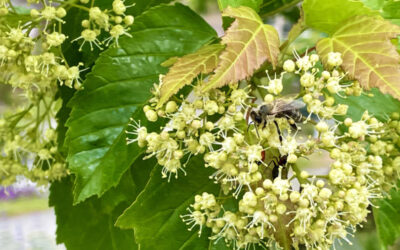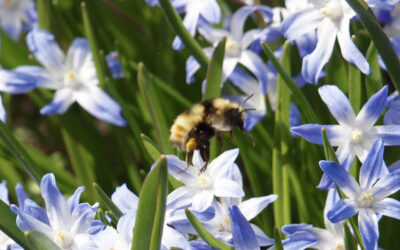Gardening with Nature | August 2021
Article by Sigrie Kendrick
The Garden is Growing
The Okanagan Xeriscape Demonstration Garden is growing, literally.
Working with the City of Kelowna, OXA has just completed the first phase of an expansion of the UnH2O Xeriscape Demonstration Garden on Gordon Drive in Kelowna.
The new garden area is at the back of the existing UnH20 Garden, with the wall of the H20 Aquatic Centre as a backdrop, and it will illustrate drought-tolerant trees, shrubs and cedar hedge alternatives. Calamagrostis (Karl Foerster feather reed grass) was previously planted there.
After a Spring of record drought, this educational area couldn’t be timelier and will show Okanagan residents that they can in fact have beautiful shade trees, privacy hedges and stunning outdoor spaces without compromising our most precious resource, water.
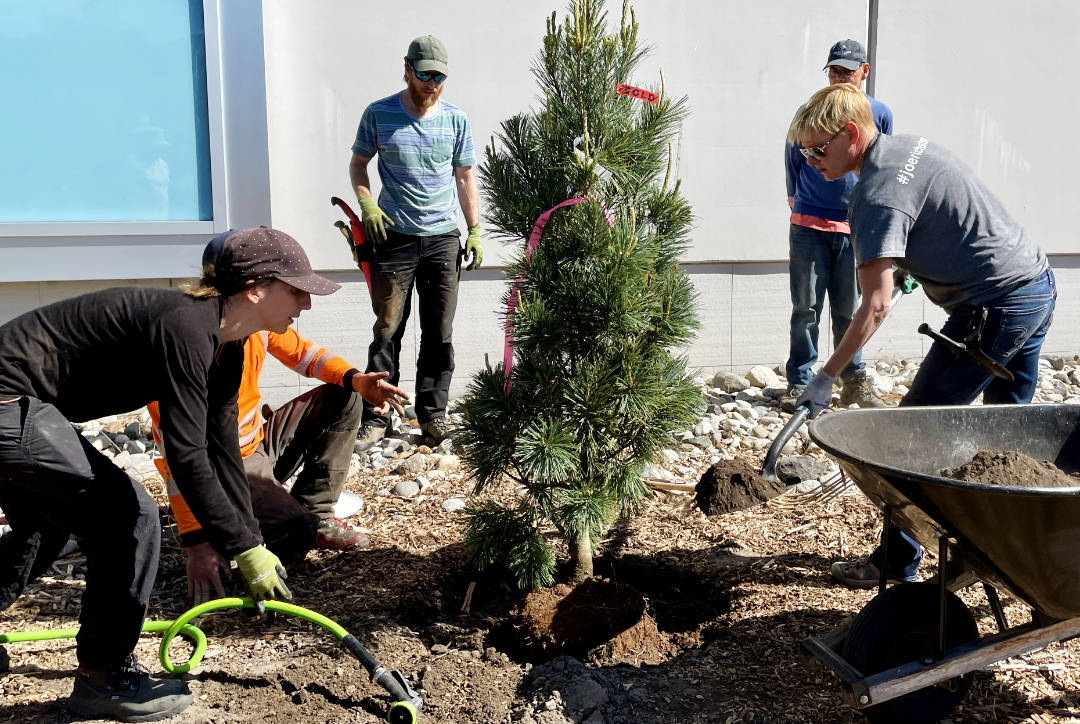
A total of six trees have been planted to date and in the Fall, volunteers will plant shrubs and cedar hedge alternatives in what will be the sixth featured garden in the Xeriscape Demonstration Garden to be called the Woodland Grove.
While these trees are young now, space has been left for them to grow to maturity in their new homes.
For year-round interest, two evergreen-needled Pinus flexilis ‘Vanderwolf’s Pyramid’ were included in the planting plan. Known commonly as Limber Pine, these evergreens are hardy in zones 4-7 and grow slowly to a height of 20-30 ft. reaching half as much in width. Pinus flexilis ‘Vanderwolf’s Pyramid’ is not bothered by hungry deer, even in winter.
As the name suggests ‘Vanderwolf’s Pyramid’ is an upright growing pine with a pyramidal growth habit. The needles of this pine are approximately three inches long, arranged in bunches of five, and are a green-blue colour with a silvery cast.
This adaptable evergreen forms a deep tap-root, allowing it better access to the limited water found in its natural alpine habitat and therefore it is all but impossible to transplant once established.

Limber Pine
Photo credit: Pat Breen, Oregon State University
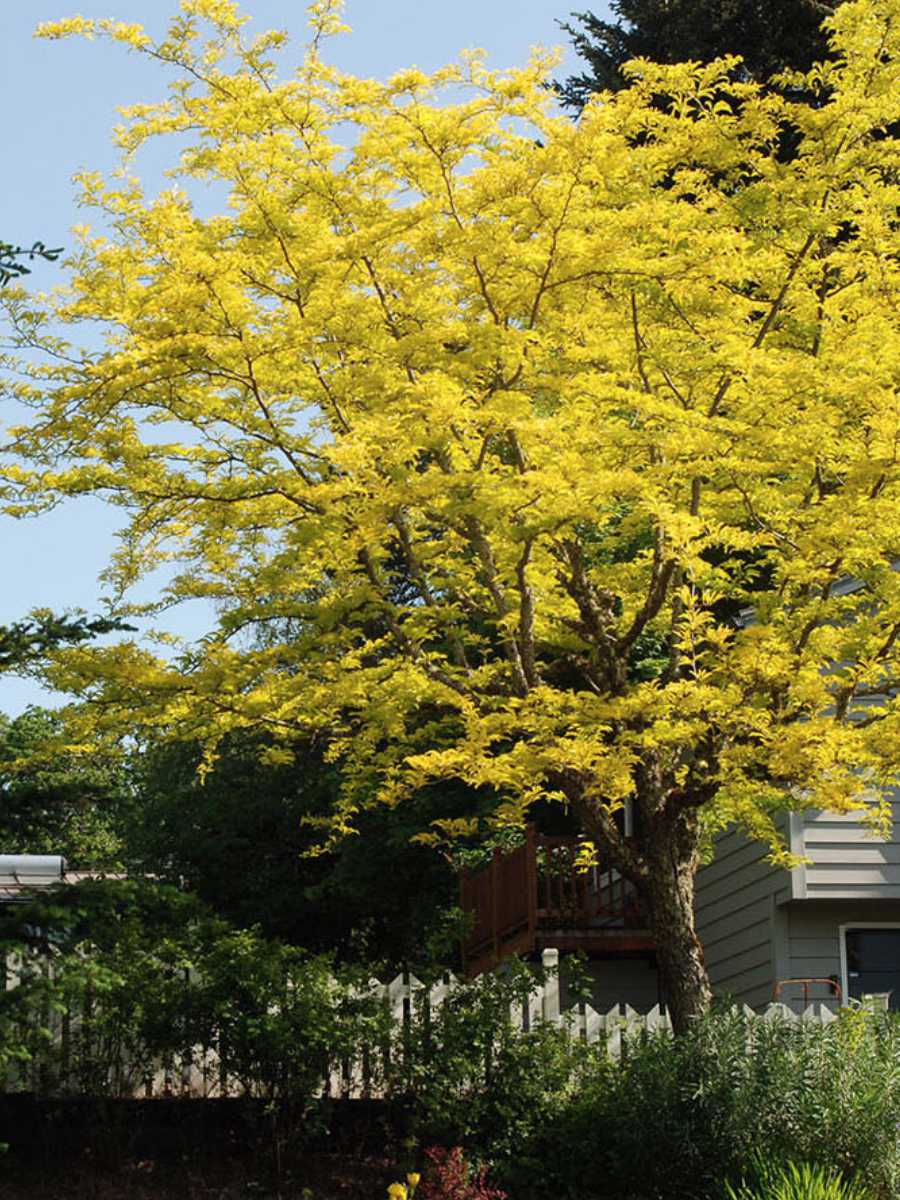
One of the deciduous trees featured foremost in the Woodland Grove is Gleditsia triacanthos f. inermis, commonly known as Thornless Honey Locust, whose golden canopy will provide dappled shade for the under-story plants planted beneath it.
Typically, Gleditsia has a rounded form and reaches heights of 60-80 ft. but due to space limitations at the site, the cultivar ‘Skycole’ was chosen as it has a more pyramidal growth and it reaches heights up to 45 feet with a width of 25-35 feet.
‘Skycole’ is a thornless cultivar, happiest in full sun and tolerant of drought, heat, pollution and deer. This tree is hardy in zones 3-8 and is nearly seedless meaning less weeding of unwanted offspring.
The Spring flowers are greenish-white and somewhat nondescript but the leaves put on a show in the Fall turning a spectacular yellow as the nighttime temperatures dip.
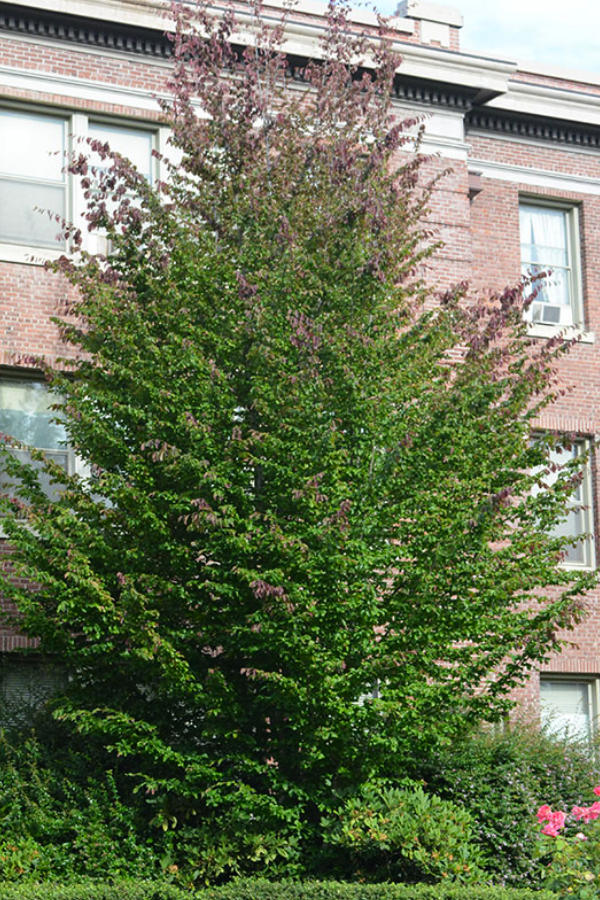
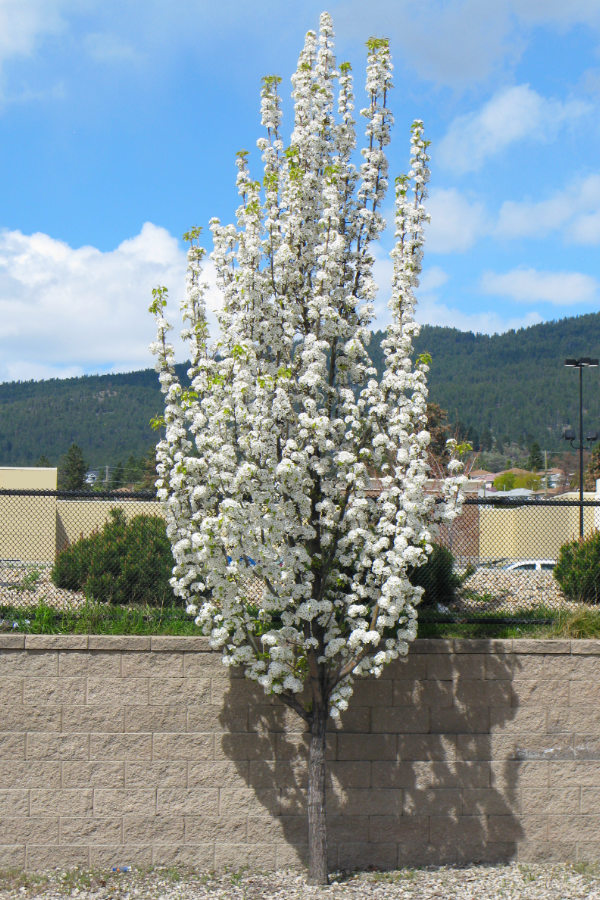
Also planted in the new Woodland Grove are two Parrotia persica or Persian Ironwood trees. Parrotia can be grown as either a small tree or a multi-stemmed shrub and will reach heights of 10 feet within 10 years, ultimately reaching up to 40 feet.
Native to what was historically known as Persia, this drought-tolerant tree is also unfazed by clay soil and urban air pollution and as such deserves wider consideration for city use.
The four-inch long, oblong leaves are purple-red at the beginning of the season, but mature to dark green in summer and then turn shades of yellow, orange and red with the arrival of Fall.
Parrotia persica also provides winter interest with exfoliating bark in shades ranging from white, and tan to green on mature specimens.
Persian Ironwood suffers no serious pest or disease issues.
Lastly, a Crataegus mordenesis ‘Snowbird’ commonly known as Snowbird Hawthorn was planted.
‘Snowbird’ is a hybrid that was developed at the Morden, Manitoba Research by Agriculture Canada and is extremely cold hardy, surviving Prairie winters to zone 3.
‘Snowbird’ features clusters of white spring flowers followed by red berries and is happiest in a full sun location where it will reach a height of 10-20 feet with a similar spread.
This Hawthorn is adaptable to dry conditions, is drought-tolerant once established and is not fussy about soil type.
It has glossy lobed leaves glow yellow in Autumn.
As well as in our own Plant Database, a lot of useful information can be found on the Oregon State University Horticulture website.
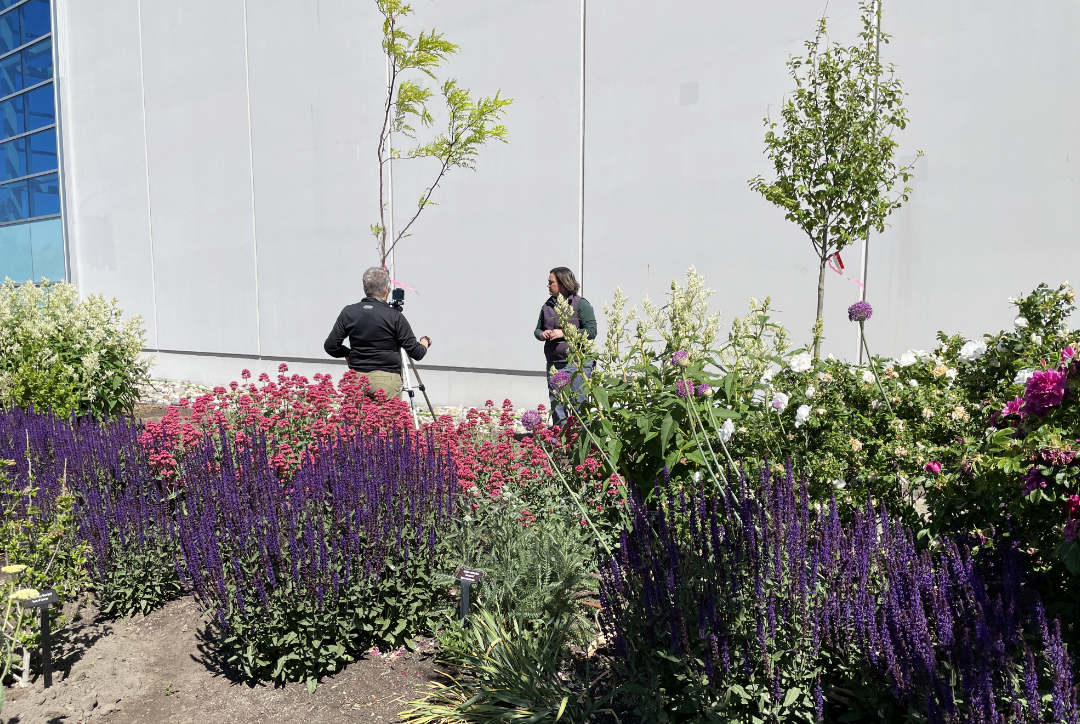
I was working in the UnH2O garden on the August long weekend and was amazed at the riot of flowers currently in bloom in the established garden. It looks stunning.
Why not visit the garden for yourself and witness the amazing profusion of pollinators grazing on the floral buffet? Stroll on the new flagstone path through the expanded section of the garden.
I guarantee it will be a pleasure for all the senses.
Sigrie Kendrick is a Master Gardener and Executive Director of the Okanagan Xeriscape Association

